
- Source: i-D Magazine
- Author: Mahoro Seward
- Date: August 19, 2021
- Format: PRINT AND DIGITAL
The artist creating mind-bending new worlds from the queer Black experience
Jacolby Satterwhite discusses a decade of work, the blurred lines between the personal and the political, and how precarity fuels his practice.
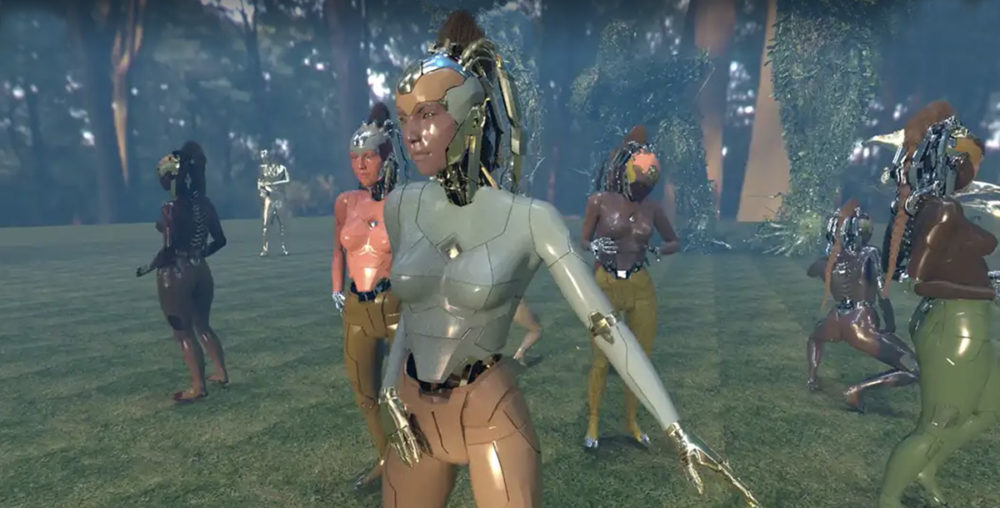
Jacolby Satterwhite, We Are In Hell When We Hurt Each Other, 2020 [still]. Image courtesy of Miller ICA at Carnegie Mellon University
For many, existential uncertainty can be paralysing. Quite the opposite goes for Brooklyn-based interdisciplinary artist Jacolby Satterwhite, though. In fact, it’s a force that’s driven his practice forward over the past decade, through illustration, music production, performance, painting, sculpture, photography, virtual reality, video game design, writing and more. Restless as that may seem, all of these strands braid together in Jacolby Satterwhite: Spirits Roaming on the Earth, the first major monographic survey of his work that just opened at the Miller Institute for Contemporary Art at Carnegie Mellon University in Pittsburgh.
With a title lifted from an earlier album he produced with a group of collaborators that included Nick Weiss and Patrick Belaga, and recordings of his late mother and muse, Patricia Satterwhite, the show charts the progression of his entire oeuvre — a dense tapestry of artistic disciplines and charged ideas. “It’s quite a complex exhibition,” Jacolby himself concedes. “It’s three series of work, and two of those are six videos. And then there are sculptures and neons and all of this ephemera. It’s three floors, and you’re going to have to roam around this space for at least four hours to take it all in.”
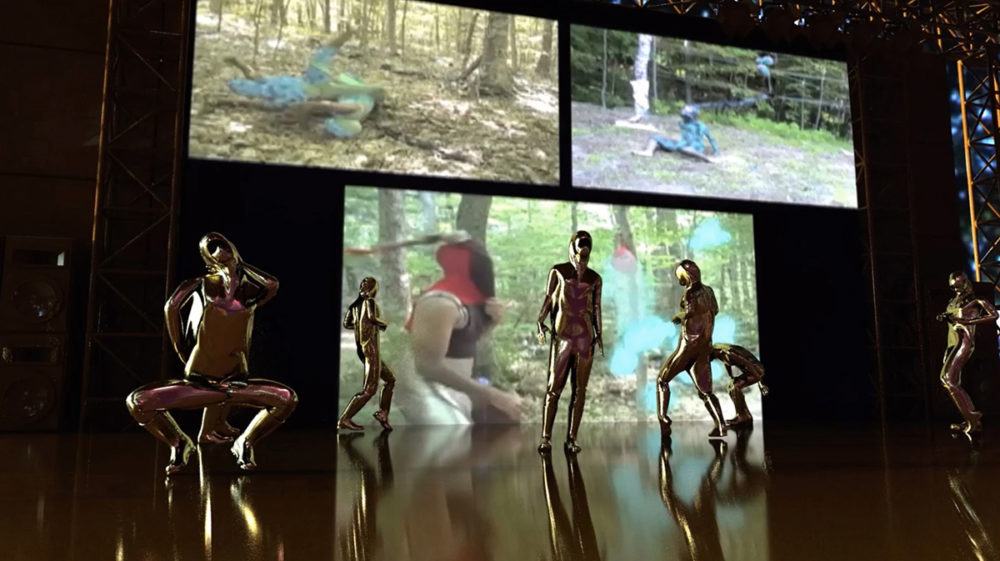
Jacolby Satterwhite, We Are In Hell When We Hurt Each Other, 2020 [Still]. Image courtesy of Miller ICA at Carnegie Mellon University
Anyone who chooses to dedicate those hours to it will be well rewarded. After all, Jacolby has developed a name for himself as one of the most diverse and gifted American artists of his time. What’s more, in using his broad skillset to synthesise the languages of queer theory, West African spiritual tradition, and surrealism, he’s created a body of work that pointedly challenges the hegemony of Western art history. It “turns my personal, queer and Black life into a meta-narrative that speaks to public realities and politics, a form that is not about me but all about me at the same time,” he says.
The significance of Jacolby’s work can be seen in a companion book, How lovly is me being as I am, which features contributions from some of the sharpest voices in contemporary art today. It’s edited by Elizabeth Chodos, the exhibition’s curator, and Andrew Durbin, editor-in-chief of Frieze, and compiles written contributions from the likes of curator Kimberly Drew, Glitch Feminism author Legacy Russell, and Malik Gaines, a professor at NYU’s Tisch School of the Arts.
Ahead of the show’s opening, Jacolby sat down with us over Facetime to discuss twelve years of world-making, the lasting impact of his mother’s work, and why he’s not the artist you think he is.
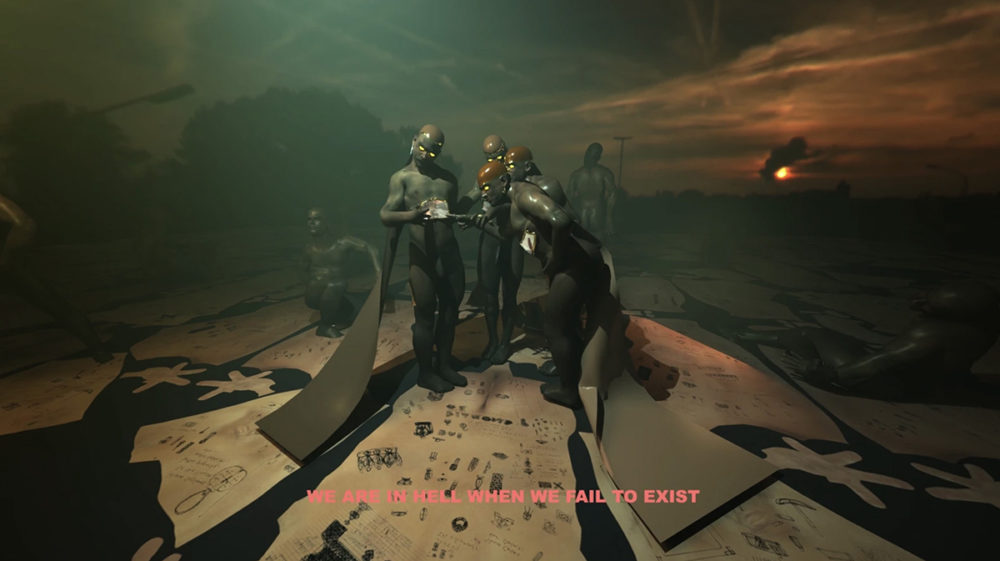
Jacolby Satterwhite, Shrines, 2020 [Still]. Image courtesy of Miller ICA at Carnegie Mellon University
Spirits Roaming on the Earth charts your career over the past 12 years. What impression of your body of work did you want this exhibition to give?
The purpose of this exhibition has been to give a more linear perspective of what I’ve been doing over the past 12 years, and I feel that, alongside the book we’ve created, it’s really going to make my intentions a lot more clear. I sometimes devote so much time and energy to the conceptual layers of my work, that whenever I release something new, that’s what dominates. I’ll do a 180 that’s so extreme, and that new direction will dominate the way that I’m perceived as an artist. Sometimes I’m more performance-oriented, then I get really CGI or sculpture oriented, and now I’m moving into oil paintings. But I often get boxed in as one of those things. I think this show will show the multidisciplinary nature of what I do, and how these things all come together as one focussed thought.
In an accompanying exhibition text, Elizabeth Chodos writes of your “special ability to turn existential uncertainty into a generative engine of resilience, reinvention and celebration”. That feels especially apt today. How do you channel feelings of existential uncertainty in your work, and how has that changed over the years?
Well, when I think about my last two, We Are In Hell When We Hurt Each Other and Shrines — both of which were made during the height of the pandemic and racial tension in America — they were made at a time I felt very overwhelmed. I felt very uncertain of what capitalism in the art world means. I realised that my practice as an artist is a simulation of something, it’s not real. So when I was making the work, I couldn’t help but address those things, and I thought about what kind of gestures, in both a performance and an animation context, would respond to these things. For We Are In Hell When We Hurt Each Other, I made this 24-minute repetitive film of these Black femme-bot characters that had complete autonomy in the face of the obstacles — microbiological particles, bullets and all of these objects of weaponry — flying towards them, and they’re completely smashing and crushing them. It then ends with the camera panning through a garden which is basically a flowerbed made in Breonna Taylor’s image. It’s a tribute to her, and an attempt to create an alternative space where Black female energy has complete agency, more than any other creature in the space around it.
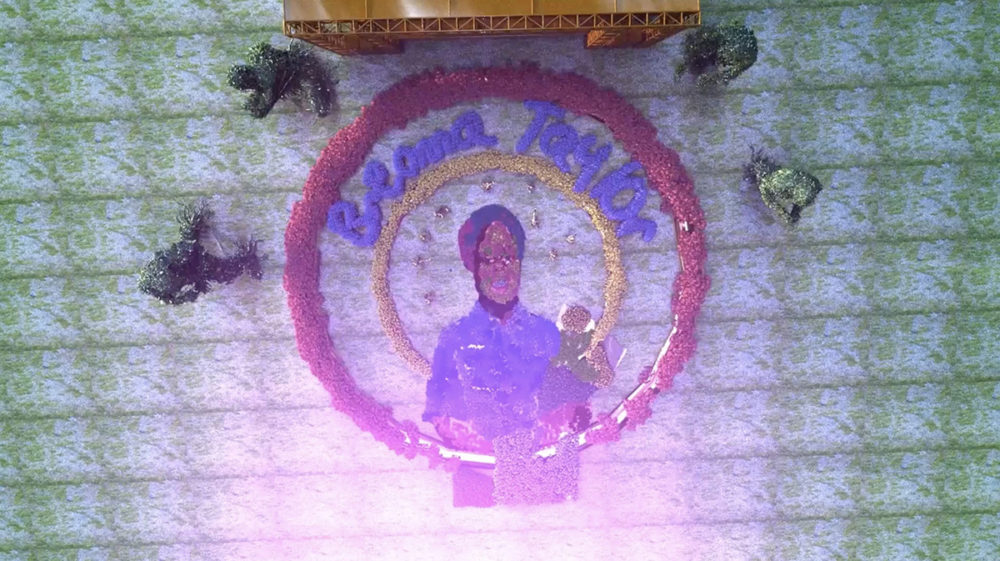
Jacolby Satterwhite, We Are In Hell When We Hurt Each Other, 2020 [Still]. Image courtesy of Miller ICA at Carnegie Mellon University
What were the main conceptual or thematic pillars that you wanted to make sure were really evident to anyone visiting the exhibition?
I feel that what is interesting about my process in making this body of work is the power to be found in using what’s around you — disparate archives, live-action performance footage, drawings that are family heirlooms, archive photography, the internet, personal essays that are like surrealist storyboards. If you’re a sculptor, you have the assemblage materials in your studio; if you’re a painter, you have oil paint. I’ve used data as a palette, and I’ve used that data to try to force these asymmetrical ideas to come together. That’s created a subconscious intention in my work that is very autobiographical and authentic, and also speaks to our times in a really strong way. So I think that perhaps the thread that binds it all together is that it demonstrates that certain surrealist practices really have very fruitful and productive ways to speak about the personal sphere and the times we live in.
You mentioned the inclusion of family heirlooms, and you’ve included a series of works by your late mother, which have also been featured in previous shows. Could you tell us more about why it was so important to include them again here?
I always include her drawings in my shows, though I think that maybe in the future they’ll be less present. But everything I’ve done since 2008 has been rooted in trying to figure out how to make her schematic diagrams and drawing into these artistic scores. They were these Da Vinci-esque inventions that were instructions for me as an adult human being on how to navigate life and solve certain visual problems. I was inspired by the prolific output of these drawings, and I wanted to help her. In order to do that, I had to learn how to draw. Eventually, I realised that there was a delusion of grandeur behind the drawings that was associated with her schizophrenia, and I began to make my own paintings and become an artist in my own right. When I became a full-grown adult in grad school, though, I realised that the root of my practice is something I should return to fully explore — she had this self-taught practice that was completely unassociated with academia, but through her consistency, her drawings became really sophisticated and accumulated all of the formal aspects that make a good drawing. I couldn’t let that voice be muted, and I had to give it a full decade’s tribute. But I feel like I’m at the point of a full cycle again where I’m now leaving her, and I’ve found something really powerful through the process of investigating her work that will probably be witnessed over the next 10 years.
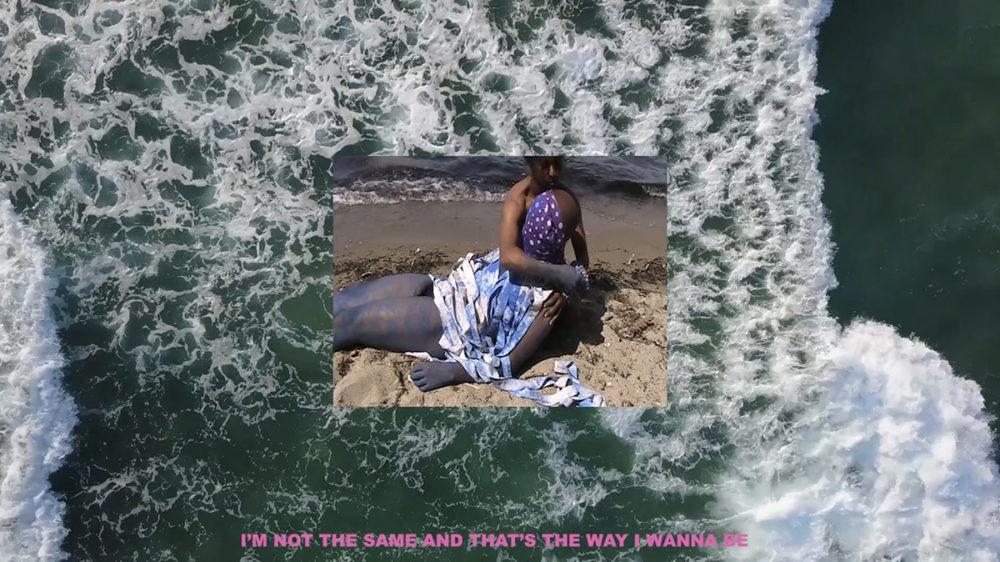
Jacolby Satterwhite, Birds In Paradise, 2019 [Still]. Image courtesy of Miller ICA at Carnegie Mellon University
For newcomers to your practice, are there any particular works that you think are worth highlighting?
I’m really proud of the Birds in Paradise series. It was a visual album for my album Love Will Find A Way Home, and it’s three VR pieces and six 3D animation films. It expands from six conceptual ideas, a lot of which are derived from Yoruba Gẹlẹdẹ masquerade culture. I’ve long been really interested in the relationship between Yoruba performance culture and my own practice, because they worship the Queen Mother of the village and use amazing interdisciplinary sculpture and costumes and props for their these rituals that speak about contemporary times. There’s a video called Blessed Avenue where you see characters on the left channel in this banal, S&M suite of factories, controlling each other with whips and chains in this really strange, abject folly, and then on the channel to the right, there are these glaciers melting and forest fires and floods, and these flying characters that are above all the chaos. It’s kind of complicated, but when you see the whole series, there are these weird repetitions and echoes and layers. I think it’s a rewarding revelation of what I’m doing as an artist.
And what’s the take-home message in what you’re doing as an artist?
That there’s no medium that can really define me. My practice is a very broad conceptual investigation that I will be committed to for the rest of my life, which will be injected through many different mediums, languages, styles, and approaches to art-making. But I’m just an artist. I’m not just a performance artist, I’m not just a virtual reality artist, I’m not just a 3D animator, I’m not just a painter, I’m not just a draftsman or a conceptual artist. I’m just using whatever I have at my disposal to express myself.

Jacolby Satterwhite, Blessed Avenue, 2018 [Still]. Image courtesy of Miller ICA at Carnegie Mellon University
Jacolby Satterwhite: Spirits Roaming on the Earth, curated by Elizabeth Chodos, at the Miller Insitute for Contemporary Art at Carnegie Mellon University until December 5 2021.

